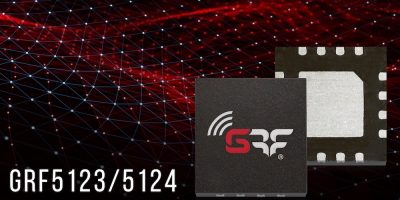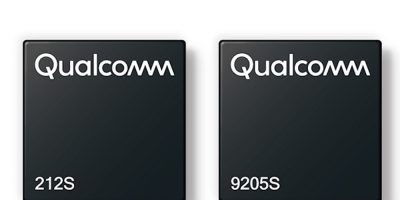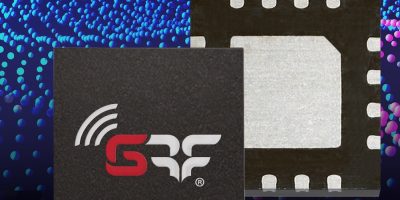High gain, high linearity driver amplifiers that support lower supply voltages and which allow for 34 per cent reduction in power consumption have been released by Guerrilla RF. The GRF5123 and GRF5124 are designed specifically for 5G mMIMO transmitters.
They have a rated operating range of 1.8 to 5.0GHz and each device can cover all major mMIMO bands with separate tunes covering 1.8 to 2.2GHz, 2.3 to 2.7GHz, 3.3 to 4.2GHz and 4.4 to 4.7GHz.
Both devices have a 3.0 x 3.0mm QFN-16 footprint that has become the de facto standard for many 5G mMIMO driver applications, said Guerilla RF. The two devices differ in rated gain; the GRF5124 offers approximately 3dB more gain than the GRF5123. These gain options provide latitude when designing for 64T64R and 32T32R 5G mMIMO systems where different gain levels are desired.
Each core can be operated from a 5.0V or 3.3V supply voltage. The ability to operate on a lower 3.3V rail allows for a 34 per cent reduction in power consumption while trading off approximately 2dB in compression and linearity performance. For 64T64R systems, this lower supply voltage can save up to 10W in consumed power, advised the company.
When operated at 2.5GHz with a 5V supply and only 100mA of current, the GRF5123 delivers 37.4dB of gain, 22.9dBm of OP1dB compression, 38.6dBm of OIP3 linearity, and a low noise figure of 1.2dB. The device can also be operated with a 3.3V rail with 36.5dB of gain and comparable linearity, compression and noise performance.
Given the same operating frequency and supply rail, the GRF5124 provides 40.2dB of gain, 23.3dBm of OP1dB compression, 36.3dBm of OIP3 linearity, and a slightly higher noise figure of 1.6dB. Using a 3.3V supply reduces the gain by 1dB and the linearity and compression performance by 2dB.
“The GRF5123/4 are specialised, high-gain variants of Guerrilla RF’s popular pHEMT driver cores which are already used in 4G and 5G base station applications,” says Jim Ahne, Guerrilla RF’s vice president of automotive and 5G products.
Samples and evaluation boards are available for the GRF5123 and GRF5124.







